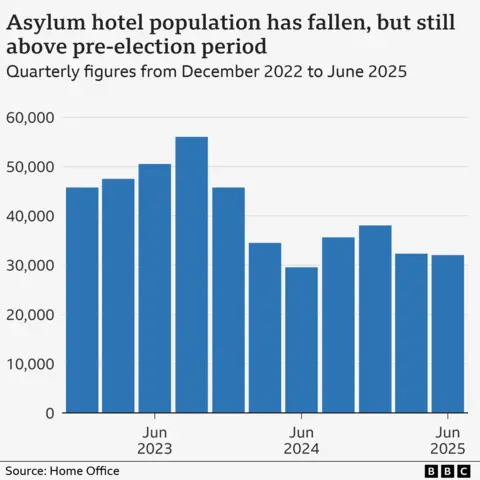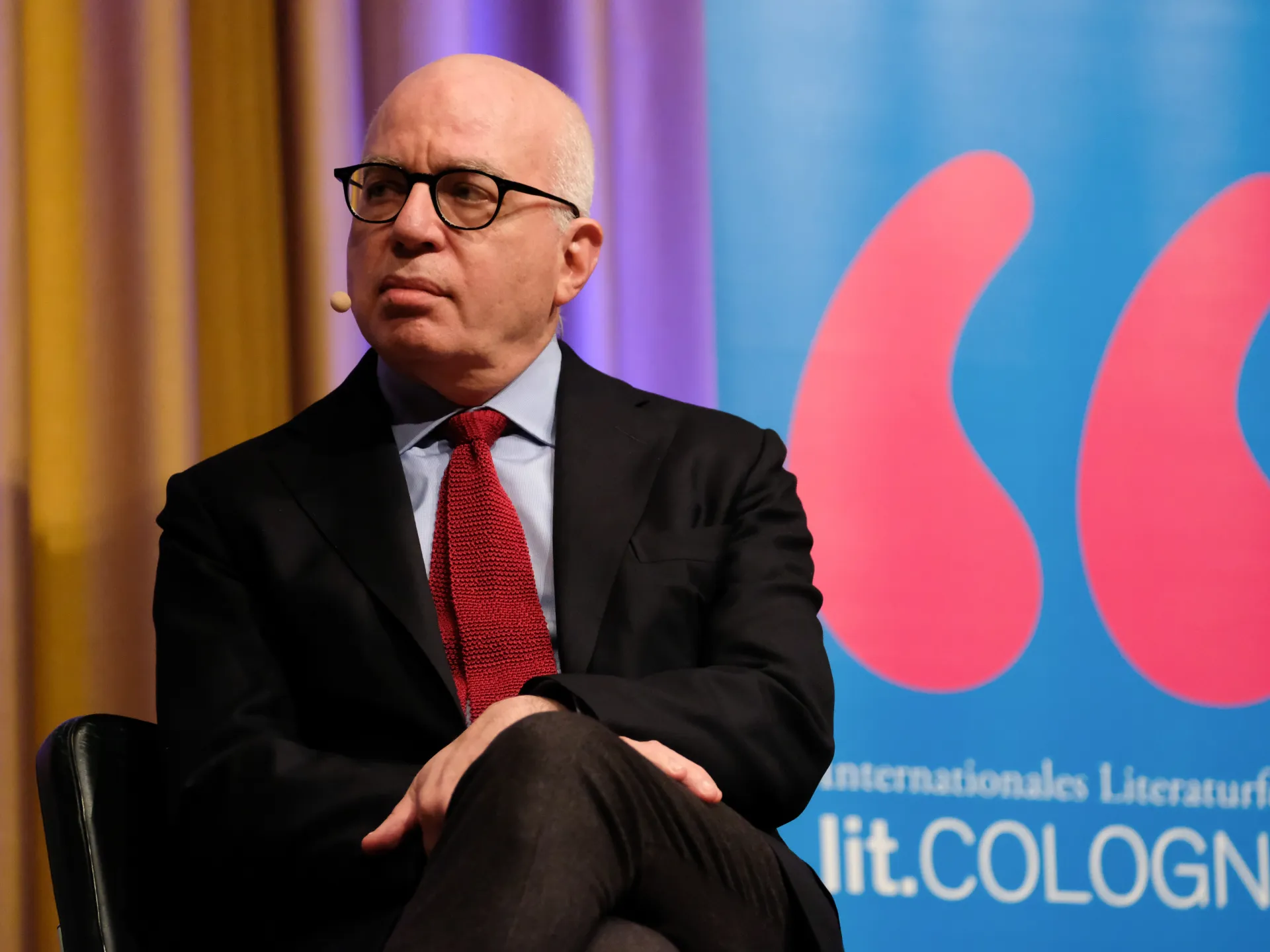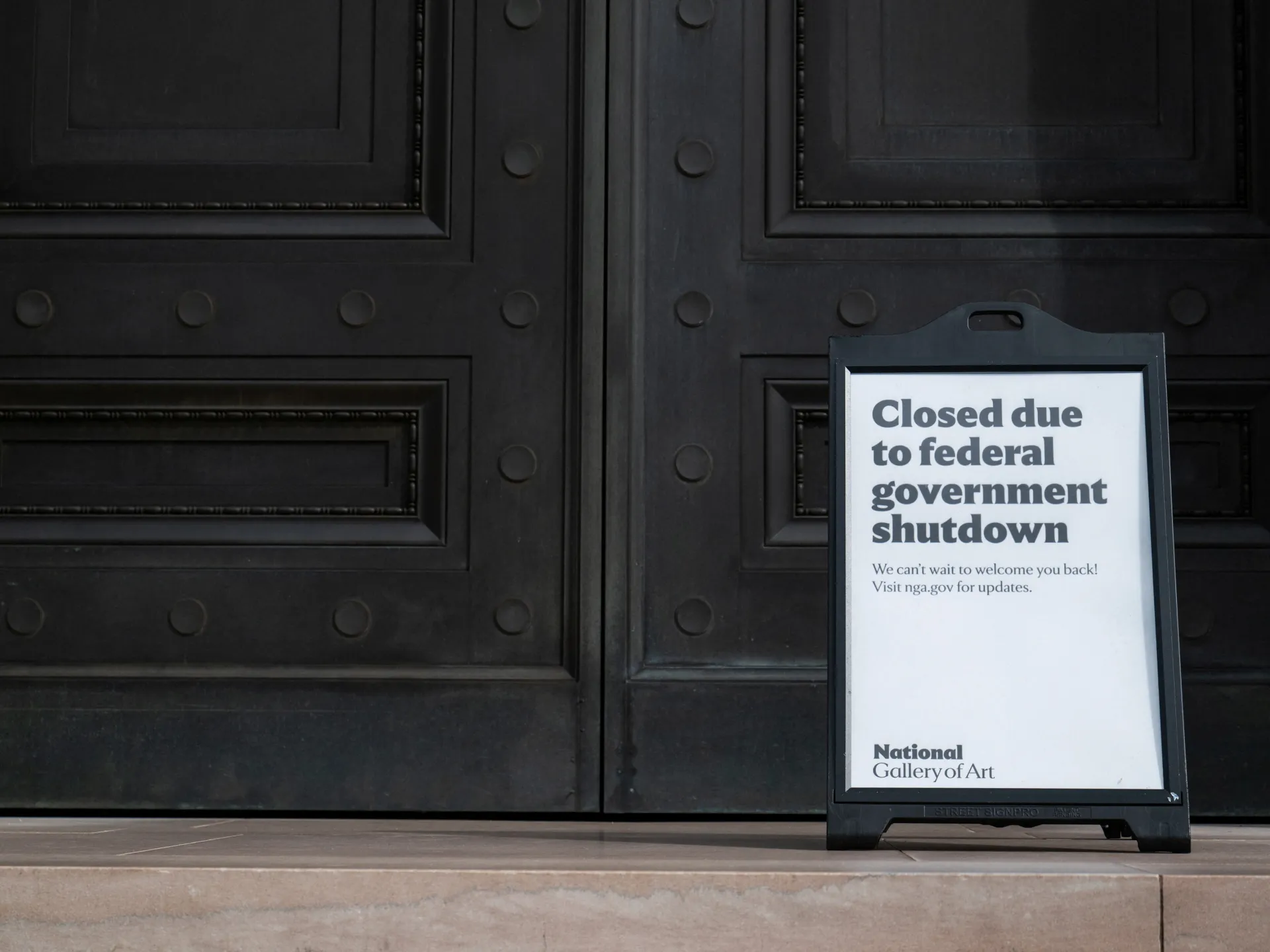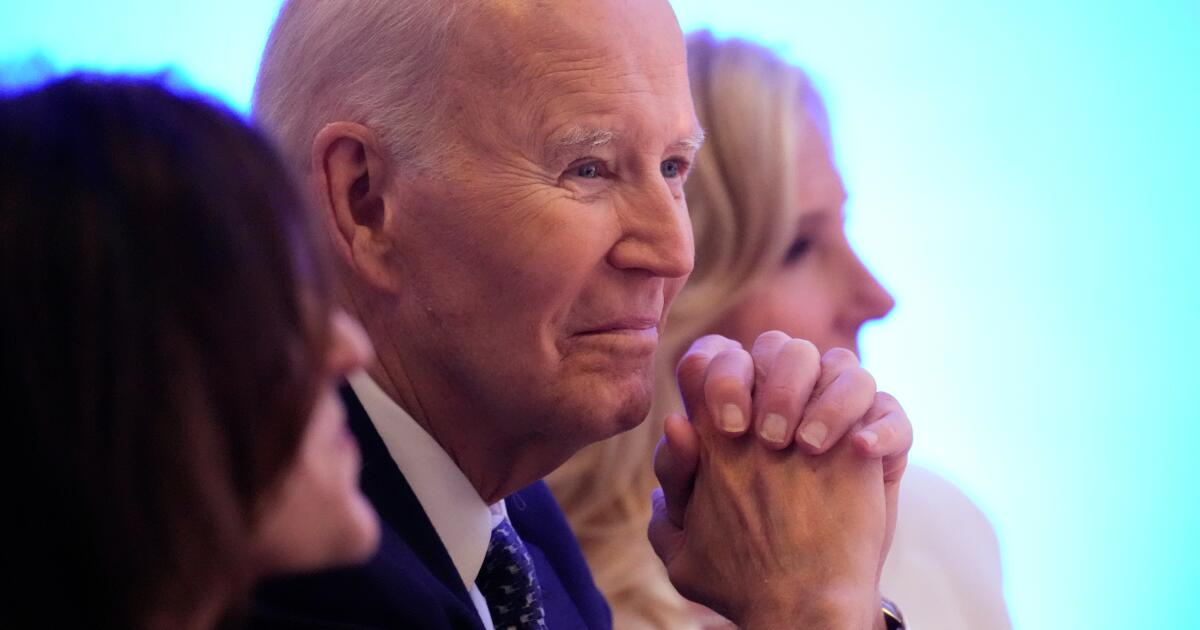
UN’s Albanese presents blistering report on complicity in Gaza genocide | Israel-Palestine conflict News
Francesca Albanese, the United Nations special rapporteur on Palestine, has taken aim at states complicit in Israel’s genocide in Gaza, calling for a new multilateralism that will prevent it from happening again in future.
Albanese presented her new report – “Gaza Genocide: a collective crime” – to the UN General Assembly on Tuesday, addressing delegates remotely from the Desmond and Leah Tutu Legacy Foundation in Cape Town, South Africa.
Recommended Stories
list of 3 itemsend of list
Israel had, she said, left Gaza “strangled, starved, shattered”. Her report, which examines the role of 63 states in Israel’s actions in both Gaza and the West Bank, calls out the multilateral system for “decades of moral and political failure” in a colonial world order sustained by a global system of complicity”.
“Through unlawful actions and deliberate omissions, too many states have harmed, founded and shielded Israel’s militarised apartheid, allowing its settler colonial enterprise to metastasise into genocide, the ultimate crime against the indigenous people of Palestine,” she said.
Genocide had been enabled, she said, through diplomatic protection in international “fora meant to preserve peace”, military ties ranging from weapons sales to joint trainings that “fed the genocidal machinery”, the unchallenged weaponisation of aid, and trade with entities like the European Union, which had sanctioned Russia over Ukraine yet continued doing business with Israel.
The 24-page report analyses how the “live-streamed atrocity” was facilitated by third states, zooming in on how the United States provided “diplomatic cover” for Israel, using its veto power at the UN Security Council seven times and controlling ceasefire negotiations. Other Western nations had collaborated, it said, with abstentions, delays and watered-down draft resolutions, reinforcing “a simplistic rhetoric of ‘balance’”.
Many states had, it said, continued supplying Israel with arms, “even as the evidence of genocide … mounted”. The report noted the hypocrisy of the US Congress passing a $26.4bn package for Israeli defence, just as Israel threatened the Rafah invasion – supposedly a “red line” for the administration of former US President Joe Biden.
The report also points a finger of blame at Germany, the second-largest arms exporter to Israel during the genocide, with supplies ranging from “frigates to torpedoes”, and the United Kingdom, which has allegedly flown more than 600 surveillance missions over Gaza since war broke out in October 2023.
While acknowledging the “complexity of regional geopolitics”, the report also highlighted the complicity of Arab and Muslim states through US-brokered normalisation deals with Israel.
It points out that mediator Egypt maintained “significant security and economic relations with Israel, including energy cooperation and the closing of the Rafah crossing” during the war.
Albanese said the UNGA should have confronted the “dangerous precedent” of sanctions imposed on her earlier this year by the United States over her criticism of Israel’s actions in Palestine, which had prevented her from travelling to New York in person.
“These measures constitute an assault on the UN itself, its independence, its integrity, its very soul. If left unchallenged, these sanctions will drive yet another nail into the coffin of the multilateral system,” she said.
The Gaza genocide “exposed an unprecedented chasm between peoples and their governments, betraying the trust on which global peace and security rest”, said the report.
Speaking at the UNGA, the special rapporteur called for a new form of multilateralism, “not a facade, but a living framework of rights and dignity, not for the few … but for the many”.
Action taken in the past against South Africa, Rhodesia (now Zimbabwe), Portugal and other rogue states had, she said, shown that “international law can be enforced to secure justice and self-determination”.
Flight delays more common as US government shutdown drags on | Business and Economy News
More air traffic controllers are calling in sick, often to work another job to pay for groceries and medicines.
Published On 28 Oct 2025
United States air traffic controllers will miss their paycheques because of the ongoing government shutdown, raising concerns that mounting financial stress could take a toll on the already understaffed employees who guide thousands of flights each day.
Paycheques were due on Tuesday.
Recommended Stories
list of 4 itemsend of list
Flight delays are becoming more common across the country as more controllers call out sick because the Federal Aviation Administration (FAA) was already so short on controllers before the shutdown.
Transportation Secretary Sean Duffy and National Air Traffic Controllers Association President Nick Daniels have continued to emphasise the pressure that controllers are feeling. They say the problems are likely to only get worse the longer the shutdown continues.
Not only are controllers worrying about how to pay for their mortgages and groceries, but Daniels said some of them are also grappling with how to pay for the medicine needed to keep their children alive.
Duffy said he heard from one controller who had to tell his daughter she couldn’t join the travelling volleyball team she had earned a spot on because he couldn’t afford the cost during the shutdown.
“Air traffic controllers have to have 100 percent of focus 100 percent of the time,” Daniels said Tuesday at a news conference alongside Duffy at LaGuardia Airport in New York City. “And I’m watching air traffic controllers going to work. I’m getting the stories. They’re worried about paying for medicine for their daughter. I got a message from a controller that said, ‘I’m running out of money. And if she doesn’t get the medicine she needs, she dies. That’s the end.’”
The FAA restricts the number of flights landing and taking off at an airport anytime there is a shortage of controllers to ensure safety. Most of the time, that has meant delays — sometimes hours long — at airports like New Jersey’s Newark Liberty International Airport or Burbank Airport in California. But over the weekend, Los Angeles International Airport actually had to stop all flights for nearly two hours.
Controllers are planning to assemble outside at least 17 airports nationwide on Tuesday to hand out leaflets urging an end to the shutdown as soon as possible.
Money worries
The number of controllers calling in sick has increased during the shutdown – both because of their frustration with the situation and because controllers need the time off to work second jobs instead of continuing to work six days a week, as many of them routinely do. Duffy has said that controllers could be fired if they abuse their sick time, but the vast majority of them have continued to show up for work every day.
Air traffic controller Joe Segretto, who works at a regional radar facility that directs planes in and out of airports in the New York area, said morale is suffering as controllers worry more about money.
“The pressure is real,” Segretto said. “We have people trying to keep these planes safe. We have trainees — who are trying to learn a new job that is very fast-paced, very stressful, very complex — now having to worry about how they’re going to pay bills.”
Duffy said the shutdown is also making it harder for the government to reduce the longstanding shortage of about 3,000 controllers. He said that some students have dropped out of the air traffic controller academy in Oklahoma City, and younger controllers who are still training to do the job might abandon the career because they can’t afford to go without pay.
“This shutdown is making it harder for me to accomplish those goals,” Duffy said.
The longer the 27-day shutdown continues, the more pressure will continue to build on the US Congress to reach an agreement to reopen the government. During the 35-day shutdown in President Donald Trump’s first term, the disruptions to flights across the country contributed to the end of that disruption. But so far, Democrats and Republicans have shown little sign of reaching a deal to fund the government.
Only Murders in the Building undergoes huge filming shake-up for season 6
The popular murder mystery series will undergo a huge format change for its highly anticipated sixth season
Only Murders in the Building is headed to London to film the sixth season of Hulu and Disney+’s hugely popular crime comedy.
The hit series starring Steve Martin, Martin Short and Selena Gomez has just wrapped up its fifth season with another jaw-dropping finale.
This time, the podcasting trio have been investigating the mysterious murder of the Arconia’s beloved doorman Lester (played by Teddy Coluca) they suspect is connected to the New York mob.
Meanwhile, a rival trio of powerful billionaires, portrayed by season guest stars Christoph Waltz, Logan Lerman and Renée Zellweger, quickly become their prime suspects when they arrive to sabotage their detective work.
With the fifth season coming to an end with another show-stopping finale this Tuesday (28th October), countless fans are already itching for the next instalment, which has now been officially confirmed.
Disney+ and Hulu have also confirmed that Only Murders is eyeing a change of scenery next time as the series is heading to London.
This is the first time the trio will venture out of the United States as part of their investigations, which rarely leave New York.
Season four saw them vacate the confines of the Arconia to head to Hollywood, California, though season six will be at least partially set on a whole new continent.
Spoilers won’t be revealed here, but fans may discover a hint towards Charles, Oliver and Mabel’s next case in the recently released finale.
This is the biggest shake-up to the series yet, as all five seasons of Only Murders so far have revolved around murders in their iconic apartment block.
Whatever awaits in season six, the series is expected to continue to prove a monster hit for Hulu as an army of fans have already devoured the latest episode.
Viewers have already been singing the episode’s praises on X, where one user posted: “What a finale!!! I can’t say everything cuz of spoilers but this is what Television is all about.”
“What a season finale, what a cliffhanger,” another shared. “I didn’t see that coming, can’t wait to see season 6.”
Someone else teased: “That last scene of the Only Murders in the Building finale?! I literally gasped when they revealed who’s the victim next season.”
Get Disney+ from £5.99

Disney+ now starts at £5.99 per month, but members can get 12 months for the price of 10 by paying for a year upfront on the ad-free Standard or Premium plans.
And a final fan exclaimed: “A perfect season finale! I love this show so damn much!
“Definitely the best show on @hulu without a doubt! I really appreciate the team’s commitment to releasing each season every year.”
Stay tuned to find out if more details about the show’s sixth season are revealed soon.
Only Murders in the Building is available to stream on Disney+.
Apple surpasses $4tn market capitalisation after latest iPhone success
Published on 28/10/2025 – 16:58 GMT+1
•Updated
16:59
Apple’s stock reached new heights on Tuesday, trading above $269 a share and pushing the company’s market capitalisation to a record $4 trillion (€3.4tr). That followed stronger-than-expected demand for its latest iPhone 17.
The Cupertino-based technology giant therefore joins the elite club with Nvidia and Microsoft, which both surpassed the same valuation earlier this year.
Nvidia, the semiconductor powerhouse, became the first company in history to hit the $4tn milestone in July 2025. News of soaring AI investments and the firm’s strong profit outlook have continued to lift its share price since then, now approaching $4.7tn (€4tn).
The so-called Magnificent Seven, the seven largest publicly traded technology companies in the world, have been cashing in on the AI boom this year, with tech share prices rising accordingly. Since January, Apple shares are up more than 18%, Nvidia’s nearly 40%, and Microsoft’s close to 30%.
However, Apple has mostly stayed out of the race to invest billions in AI projects. Current market enthusiasm for the iPhone maker’s stock instead stems from the successful launch of its updated iPhone range, along with signs of easing trade and tariff pressures.
According to Counterpoint Research, the iPhone 17 series has outsold the iPhone 16 range by 14% during its first ten days on sale in China and the United States.
Five members of the Magnificent Seven, Alphabet, Apple, Amazon, Microsoft, and Meta, are reporting earnings this week. They will need to demonstrate strong growth and justify the massive spending currently underway in artificial intelligence, amid growing concerns that the sector may be forming a bubble reminiscent of the dot-com boom that burst in 2000.
According to Kate Leaman, chief market analyst at AvaTrade:”Markets move on leadership, and right now, the leadership of Microsoft, Meta, Alphabet, Amazon, and Apple is inseparable from the risk appetite of investors worldwide.”
She noted that more than 40% of S&P 500 gains this year have come via these giants.
“But with that concentration comes fragility,” she added, saying that even as revenues climb, the commentary provided by executives “will critically frame how far and how confidently the market can chase the AI story into 2026”.
Hunger looms as millions prepare to lose food aid amid shutdown
Michaela Thompson, an unemployed mother in the San Fernando Valley, relies on federal assistance to afford the specialized baby formula her 15-month-old daughter needs because of a feeding disorder. At $47 for a five-day supply, it’s out of her reach otherwise.
But with the federal shutdown blocking upcoming disbursements of Supplemental Nutrition Assistance Program benefits — previously known as food stamps — Thompson said she doesn’t know how she’s going to fill her daughter’s bottles.
“It feels like the world is kind of crumbling right now,” she said. “I’m terrified for my family and my daughter.”
Millions of low-income families who rely on SNAP benefits to put food on the table in California and across the country — about 1 in 8 Americans — are confronting similar fears this week, as federal and state officials warn that November funds will not be issued without a resolution to the ongoing federal shutdown and Congress shows no sign of a breakthrough.
Gov. Gavin Newsom and state Atty. Gen. Rob Bonta announced Tuesday that California is joining other Democrat-led states in suing the Trump administration to force SNAP payments through the use of contingency funds, but the litigation — even if successful — won’t prevent all the disruptions.
Army Spc. Jazmine Contreras, center, and Pfc. Vivian Almaraz, right, of the 40th Division Sustainment Brigade, Army National Guard, Los Alamitos, help workers and volunteers pack boxes of produce at the Los Angeles Regional Food Bank on Friday.
(Allen J. Schaben / Los Angeles Times)
It is already too late for some of the 5.5 million California residents — including 2 million children — who rely on such benefits to receive them in time to buy groceries after Friday, when many will have already used up their October benefits, state officials said. Advocates warned of a tidal wave of need as home pantries and CalFresh cards run empty — which they said is no longer a risk but a certainty.
“We are past the point at which it is possible to prevent harm,” said Andrew Cheyne, managing director of public policy at the organization End Child Poverty California.
About 41.7 million Americans were served through SNAP per month in fiscal 2024, at an annual cost of nearly $100 billion, according to the U.S. Department of Agriculture.
State officials, local governments and nonprofit organizations are scrambling to get the word out to families and to redirect millions of dollars in emergency funding to stock more food at local food banks or load gift cards for the neediest families, but many say the capacity to respond is insufficient — and are bracing for a deluge of need.
“People really don’t understand the scale and scope of what is happening and the ripple effect it will have on the economy and with people just meeting their basic needs,” said Angela F. Williams, president and chief executive of United Way.
Already, United Way is seeing an uptick in calls to its 211 centers nationwide from people looking for help with groceries, utility bills and rent, Williams said. “There’s a critical crisis that has been brewing for a while, and it’s reaching a fevered pitch.”
Cheyne said many families are well aware of the looming disruption to aid and scrambling to prepare, including by going to state food banks for groceries. Newsom has activated the National Guard to help handle that influx in California.
However, Cheyne said many others will likely find out about the disruption while standing in grocery store checkouts.
“We anticipate a huge surge in people extremely upset to find out that they’ve literally shopped, and the groceries are in their cart, and their kids are probably with them, and then they get to the checkout, and then it’s, ‘transaction denied: insufficient funds.’”
Children and older people — who make up more than 63% of SNAP recipients in California — going hungry across America is a dire enough political spectacle that politicians of both parties have worked aggressively to prevent it in the past, including during previous government shutdowns. But this time around, they seem resigned to that outcome.
Members of the military and their families receive food donated by Feeding San Diego food bank on Friday.
(Sandy Huffaker / AFP / Getty Images)
Republicans and Democrats have been unable to reach a deal on the budget impasse as Democrats fight Republicans over their decision to slash healthcare subsidies relied on by millions of Americans. With no end in sight to the nearly month-long shutdown, federal workers who are either furloughed or working without pay — including many in California — are facing financial strain and increasingly showing up at food pantries, officials said.
A deluge of SNAP recipients will only add to the lines, and some food bank leaders are becoming increasingly worried about security at those facilities if they are overwhelmed by need.
Pointing fingers
In a statement posted to its website Monday, the Department of Agriculture wrote that Senate Democrats had repeatedly voted not to restore the SNAP funds by passing a short-term Republican spending measure.
“Bottom line, the well has run dry,” it said. “We are approaching an inflection point for Senate Democrats.”
The Trump administration had said Friday that it cannot legally dip into contingency funds to continue funding SNAP into November, even as it uses nontraditional means to pay for the salaries of active-duty military and federal law enforcement.
House Speaker Mike Johnson (R-La.) walks through Statuary Hall at the Capitol on Tuesday.
(Samuel Corum / Bloomberg / Getty Images)
The administration has used tariff revenue to temporarily fund the Women, Infants and Children Nutrition Program, which serves about 6.7 million women and children nationally, though it is unclear how long it will continue do so. The California Department of Public Health said the state WIC program, which supports about half of all babies born in California, should “remain fully operational through Nov. 30, assuming no unexpected changes.”
On Capitol Hill, negotiations to end the shutdown have mostly ground to a halt. Speaker Mike Johnson (R-La.) once again refused to call House members back into session this week, sparking criticism from Democrats and some Republicans who want to negotiate a deal to reopen the government. In the Senate, negotiations remain at a stalemate.
Senate Democrats, meanwhile, have relentlessly blamed President Trump and his administration for causing the disruption to food aid, just as they have blamed the president for the shutdown overall.
“Donald Trump has the power to ensure 40 million people don’t go hungry during the shutdown. But he wishes to inflict the maximum pain on those who can least afford it. He won’t fund food. But he’s happy to build a golden ballroom,” Sen. Adam Schiff (D-Calif.) wrote Monday on X.
Schiff was referring to a $250-million ballroom Trump has planned for the White House, which he recently set into motion by demolishing the historic East Wing.
A member of the U.S. Navy waits in line to receive food from volunteers with Feeding San Diego food bank.
(Sandy Huffanker / AFP / Getty Images)
State and local responses
States have responded to the looming cut in different ways. Some have promised to backfill SNAP funding from their own coffers, though federal officials have warned they will not be reimbursed.
Newsom has stood up the National Guard and directed tens of millions of dollars to state food banks, but has made no promises to directly supplement missing SNAP benefits with state dollars — despite advocacy groups calling on him to do so.
On Friday, dozens of organizations wrote a letter to Newsom and other state officials estimating the total amount of lapsed funding for November to be about $1.1 billion, and calling on them to use state funds to cover the total amount to prevent “a crisis of unthinkable magnitude.”
Carlos Marquez III, executive director of the County Welfare Directors Assn. of California, said counties and other local agencies are responding in a number of ways, including making contributions to local food banks and looking for ways to redirect local funds — and find matching philanthropic dollars — to directly backfill missing SNAP benefits.
Los Angeles County, which has about 1.5 million SNAP recipients, has already approved a $10-million expenditure to support local food banks, its Department of Children and Family Services has identified an additional $2 million to redirect, and its partners providing managed care plans to SNAP recipients have committed another $5 million, he said.
He said his group has advocated for Newsom to declare a statewide emergency, which would help equalize the response statewide and allow for mutual aid agreements between wealthier and poorer areas.
He said his group also is advocating for the state to begin using school lunch programs to direct additional food to families with younger children at home, and to work with local senior care facilities to make sure elderly SNAP recipients are also being helped.
What comes next?
Williams, of United Way, said the organization’s local chapters are “looking for partners on the ground” to provide additional support moving forward, as needs will persist.
“It seems like every day the needs just become more and more pressing, and I’m concerned, honestly, not only about the economic toll that is being taken on individuals, I’m concerned about the mental health and emotional toll this is taking on people,” Williams said. “My hope is that people from all sectors will step up and say, ‘How can we be good neighbors?’”
On Friday, National Guard troops began a 30-day deployment at the Los Angeles Regional Food Bank, where they are sorting produce and packing food boxes. Due to “heightened concern” in the community about the military’s role in Trump’s immigration crackdown, the troops will be working in warehouses and not interacting directly with the public, said Chief Executive Michael Flood.
Flood said there has already been a surge in demand from laid-off federal workers in Los Angeles, but he’s expecting demand to increase markedly beginning Saturday, and building up distribution capacity similar to what was in place during the height of the COVID-19 pandemic — which seemed odd, considering “this is a man-made disaster.”
“It doesn’t have to happen,” Flood said. “Folks in D.C. can prevent this from happening.”
Rugby League Ashes: Australia in ‘great hands’ with Grant – Walters
Sydney Roosters prop Lindsay Collins is promoted to the starting line-up in the only personnel change to the team that started at Wembley, with Patrick Carrigan moving into the loose forward role vacated by Yeo.
Lindsay Smith, Yeo’s Penrith Panthers club-mate, steps up to the bench, with Jacob Preston named among the reserves.
“Harry and all of the senior players for that matter stepped up after Isaah’s unfortunate injury last week,” said former Kangaroo half-back Walters.
“While we’d love to have Isaah out there, he’ll still be contributing in many other ways around the group this week. He’s a natural leader, and so too is Harry so we’re in great hands this week.
“I’m really pleased with the way we’ve started the series, but we’re into a new week now and our focus is on preparing well and being at our very best this Saturday.”
Brisbane Broncos superstar Reece Walsh will again play at full-back, having scored two tries and won the man-of-the-match award on his international debut at Wembley.
Saturday’s second Test, and the third at AMT Headingley on 8 November, both kick off at 14:30 GMT and are live on BBC One.
Australia: Reece Walsh, Mark Nawaqanitawase, Kotoni Staggs, Gehamat Shibasaki, Josh Addo-Carr, Cameron Munster, Nathan Cleary, Lindsay Collins, Harry Grant (captain), Tino Fa’asuamaleaui, Angus Crichton, Hudson Young, Patrick Carrigan.
Interchanges: Tom Dearden, Lindsay Smith, Reuben Cotter, Keaon Koloamatangi.
Reserves: Bradman Best, Jacob Preston, Mitchell Moses.
UPS cut nearly 48,000 jobs in 2025, more than initial expectations

Oct. 28 (UPI) — Delivery company UPS reported on Tuesday higher-than-expected earnings but bigger job cuts in its business turnaround goals.
United Parcel Service revealed its workforce had been cut this year by some 34,000 jobs, about 14,000 more than its estimated reduction of 20,000. In addition, UPS eliminated around 14,000 corporate and management roles.
“We are executing the most significant strategic shift in our company’s history, and the changes we are implementing are designed to deliver long-term value for all stakeholders,” according to UPS CEO Carol Tome.
The cuts have already begun, UPS told CNBC in a statement.
Tome added that with the holiday shipping season quickly approaching, the 118-year-old UPS was “positioned to run the most efficient peak in our history while providing industry-leading service to our customers for the eighth consecutive year.”
Meanwhile, Wall Street saw UPS shares rise about 8% during early morning trading.
UPS, with its headquarters in Georgia, initially planned to shutter around 70 facilities.
However, around 93 leased or owned buildings closed in the first nine months of this year year.
Over the summer UPS offered buyouts to full-time drivers as part of its execution of “the largest network reconfiguration” in the company’s history.
According to UPS officials, its turnaround resulted in savings to the tune of $2.2 billion by end of third quarter and an estimated $3.5 billion in year-over-year total savings this year.
The UPS chief said the shipping conglomerate planned to incorporate artificial intelligence into its daily operations.
“The third quarter brought a wave of tariff changes, some expected, others unforeseen, and our team navigated these complexities with exceptional skills and resilience,” Tome says.
Who are the 95 Palestinian healthcare workers held captive by Israel? | Gaza
Israel is holding captive 95 Palestinian healthcare workers in its prisons. They include doctors, nurses and paramedics detained without charge. Healthcare Workers Watch recorded 80 medical workers taken from Gaza and 15 from the occupied West Bank.
Published On 28 Oct 2025
How dad-of-8 Kelsey Grammer was tamed by Bristol City star’s daughter who demanded FIVE weddings to ‘atone’ for past

AT the grand old age of 70 most men are settling down and enjoying retirement, not knee deep in nappies after welcoming their EIGHTH child.
But nothing about Frasier actor Kelsey Grammer’s life has ever followed a normal playbook – even up to his fourth wife demanding five weddings.
He weathered three failed marriages – one was physically abusive, another sexless and the other ended after just 12 months – prior to falling for Virgin Atlantic air stewardess Kayte Walsh.
The daughter of Bristol City footballer Alan Walsh and 24 years his junior, she tamed the “wild man of American comedy”, who had long battled drug and alcohol addiction.
She gave him the one thing he was missing – cosy domesticity – after endless family heartache including his sister being raped and murdered, two half brothers dying in a freak accident and his estranged dad being gunned down when he was just 13.
The couple already had a brood of three – Faith, 13, Gabriel, 10, and Auden James, eight – prior to Kelsey announcing “we’ve just had our fourth” on yesterday’s episode of Pod Meets World.
New arrival Christopher, born on Friday, takes the actor’s baby tally to eight with four different mums.
And a source told the Mail he’s “thrilled to finally have time to fully enjoy being a father all over again… [and] embracing the hands-on parenting he missed in the past”.
There’s no doubt Kayte put an end to Kelsey’s turbulent years in the wilderness, which were plagued with tragedy, heartache and more faux pas than his pompous, gaffe-prone character Dr Frasier Crane.
Yet their romance got off to a bumpy start – as the actor was still married to ex-Playboy pin-up and future Real Housewives of Beverly Hills star Camille Meyer.
Kelsey would later claim his third-wife only “married me because I was Frasier”. At his peak, he raked in more than £1million per episode for the show, which ran for 11 seasons.
He also described their marriage, which spanned 14 years until 2011, as being “so broken” that they “had not had sex in a decade” and claimed she asked for a divorce the day of his mother’s funeral in 2008.
For a long time Kelsey knew the relationship was on the rocks, admitting it was “over as soon as it began” yet he stayed with her as a “self-imposed sentence”, mainly out of stubbornness and for the sake of their two children, Mason, 24, and Jude, 21.
He met Kayte in 2009 as she showed him to his seat on a Virgin Atlantic Upper Class flight from Los Angeles to London, where he was due to appear in a play.
She claimed it was “love at first sight” – dismissing the much-joked about claim of cabin crew being on the “lookout” for wealthy suitors – and noticed “this golden glow around him”.
They chatted about music, England and life at the plane’s bar before he slipped her his number and told her the hotel he was staying at.
Kayte was “blown away by how lovely he was” but uncertain and “indecisive” about whether to call him.
She told the Mail: “I said, ‘God, if I’m meant to call him, I want a sign.’ I looked out the bus window and saw a sign reading, ‘Frasier Suites’. I was like, ‘OK, that’s not enough.’
I was her big brother, I was supposed to protect her – I could not. I have never gotten over it… It very nearly destroyed me
Kelsey Grammer
“Four minutes later, we passed an art store called Crane and a few moments later, we drove past the hotel where he was staying.”
Secret mistress
Two days later they went for a coffee, where he confided he was “in a situation he wasn’t happy in and I needed to be patient”. She claimed they spent months only kissing and holding hands.
It wasn’t long before Camille discovered Kelsey’s mistress. Allegedly when she arrived at the couple’s New York apartment to be told by the doorman ‘Mrs Grammer’ was already inside.
Fire and fury followed. The former Playboy bunny claimed she was dumped by text, sniped about his bedroom skill and made another lurid claim he liked to dress in women’s clothes.
At the time Kelsey responded: “Never been a cross-dresser but I have been very sexually adventurous. I’m not ashamed of anything I’ve done in the bedroom.”
He considered the slings to be “pathetic” attempts to remain famous – yet as a “parting gift” to give her a new direction, he helped to secure her a spot on Real Housewives and even appeared in a single episode.
The couple married just 15 days after Kelsey’s £30million divorce from Camille was finalised in February 2011. It followed a stern demand before Kayte accepted his proposal.
She recalled: “Because he’s been married so many times before I said, ‘You have to marry me more times.’ I’m his fourth wife, so I said, ‘You have to marry me at least five times.’”
Lavish nuptials followed – the first was New York, followed by an Elvis officiated Viva Las Vegas do, another at their LA home and the final, an especially romantic service in Giverny, France.
The last was inspired by Kayte’s favourite artwork Monet’s Bridge Over a Pond of Lilies. He took her to the bridge the painter used, got down on one knee and proposed.
She recalled: “It was a complete shock. Kelsey had arranged everything with the Mayor so we got to say our vows in French. It was lovely.”
Serial killer slayed sister
The romance with Kayte has undoubtedly given Kelsey the peace and stability he has lacked throughout his turbulent life.
He was born to parents Sally, a dancer, and Allen, a coffee shop owner, in Saint Thomas, US Virgin Islands, but raised in New Jersey by his mum after they divorced when he was two.
At the age of 12, his grandad died of cancer and the following year his estranged dad was murdered during a wave of racial violence after Martin Luther King’s assassination in 1968.
Seven years later, his younger sister Karen, 18, was kidnapped, raped and murdered by serial killer Freddie Glenn, who killed three women.
Glenn, now 68, who Kelsey remarkably forgave many later years, was sentenced to die in the gas chamber only for the death penalty to be scrapped.
“I was her big brother, I was supposed to protect her – I could not,” he said at the murderer’s 2009 parole hearing. “I have never gotten over it… It very nearly destroyed me.”
And just five years after losing Karen, two of his half-brothers were killed in a freak scuba diving accident.
Unsurprisingly, that amount of trauma caused unbridled chaos in his personal life – with him stating they were “the catalyst that got me into a really big problem for at least the next 15 years”.
‘Chaos, insanity, mayhem’
He consistently battled cocaine and alcohol abuse – especially while filming Frasier and Cheers – and was known for being difficult to work with, one colleague described him as “one of the biggest jerks” he had ever met.
Kelsey was described as “oozing” onto set with “glazed over eyes, half asleep, going through whatever he was going through” yet when the director yelled ‘Action’, he was “pitch perfect”.
Because he’s been married so many times before I said, ‘You have to marry me more times’…You have to marry me at least five times
Kayte Grammer
He was regularly in trouble with the law too. Kelsey was charged at least four times for crimes including cocaine possession, drink driving and violating parole conditions.
The crimes, which spanned 1988 to 1996, resulted in 30 days jail time, more than 300 hours of community service, 90-day house arrest, fines in the thousands and a 30-day court mandated rehab stint.
His relationships weren’t going well either. Kelsey’s first marriage to dance instructor Doreen Alderman lasted eight years until 1990, despite their relationship being over after less than 12 months. They share a daughter Spencer.
Two years later Kelsey had a second child, Greer, who later appeared on MTV show Awkward, with make-up stylist Barrie Buckner.
He married former stripper Leigh-Anne Csuhany, who was three months pregnant, seven months after that. But their romance wouldn’t last.
Kelsey filed for an annulment and evicted her from his home, alleging she was physically abusive to him.
He claimed she once fired a gun at him and even on their wedding day, he was seen sporting a black eye from one of her violent attacks.
In his autobiography, Kelsey claimed she convinced him he was “nothing, unattractive, untalented, undeserving of love and incapable of being loved by anyone but her” to ensure he would never leave.
“She’d spit in my face, slap me, punch me, kick me, break glasses over my head, break windows, tear up pictures of my loved ones, threaten to kill me or herself,” he wrote.
Shortly after the split, Leigh-Anne tried to kill herself. She suffered a miscarriage.
Kelsey had a string of short-lived flings after, including with Playboy model Tammi Alexander, before his third marriage to fellow top-shelf mag pin-up Camille.
Five weddings
Ultimately, it has been with Kayte where he has finally found happiness. But that contentment could have easily been derailed due to the tragedies they have faced as a couple.
Two of their pregnancies ended in miscarriage and Faith’s unborn sibling died in utero. Heartbreakingly, this often requires a mum to undergo labour to birth the deceased child.
Kayte admitted it was “devastating” for them but the blows further strengthened their relationship. Each baby has reminded them “life is a miracle” and to count their blessings.
There was the other part of me that wanted to surrender to it and go, ‘Let it mess you up a little bit. Let it hurt.
Kelsey Grammer
His ever expanding brood has also given him a second chance at parenting, after admitting he took his eye off the ball with the older kids.
He said: “I have neglected a couple of the kids in my life, especially the first two,” he said. “I’m trying to make up for a little of it now. I’m still their dad, so you can always have [a] chance to show up.”
With a stable, loving home Kelsey’s addiction issues appear to have been kept at bay – despite in 2016 admitting he stopped attending AA because he likes to “enjoy a drink”.
It’s known he was sober for years after his 1996 car crash while under the influence, which resulted in him being sent to rehab by the courts.
Previously, Kelsey’s calling toward “chaos, insanity, mayhem” was spurred on by “running away from uncomfortable feelings” and being unable to “forgive myself” for his sister’s death.
He acknowledges having “a self-destructive part of me” that encouraged his addiction, which worsened his health and contributed to a near-fatal heart attack in 2008.
Kelsey added: “I always had something in the back of my head saying, ‘Okay. That’s enough now. Cut it out. You know why you’re doing this.’
“But there was the other part of me that wanted to surrender to it and go, ‘Let it mess you up a little bit. Let it hurt.’”
But now thanks to Kayte, he lives a calmer life – when not changing nappies at 5am – and previously she said their “favourite place is our sofa”.
There they snuggle up, eat popcorn while watching films and eventually fall asleep in each other’s arms. It’s a far cry from the decades of debauchery before.
Kayte says: “As a general rule I try to operate from love. I always wanted to find a family and the love of my life. That was my dream. I feel blessed.”
No doubt Kelsey feels it’s he who has been blessed, after finding the woman who saved his life and drastically changed his future for the better.
Promoting Cross-Border Connectivity In An Era Of Payments Fragmentation
A host of enhancements to cross-border payments are promising to enrich the global payments landscape. But implementing change within this complex industry isn’t straightforward.
In today’s instant, interconnected world, a crucial juncture has been reached in cross-border payments. Businesses and consumers – increasingly frustrated with inadequate, inefficient legacy international payment processes – are demanding fast, transparent and low-cost services from their providers. And the need for the industry to deliver is becoming ever-more pressing.
Initiatives are progressing at pace to help facilitate the move to seamless, 24/7 real-time global payments. The aim is to effectively replicate the same client experience that has become easily accessible in the domestic payments space. But change of this scale comes with challenges, and a by-product of the race to deliver real-time cross-border payments is a landscape inundated with different concepts and services, with fragmentation exacerbated by individual countries’ unique sets of payments rules and regulations.
Internationally, initiatives such as the G20 Roadmap for Enhancing Cross-Border Payments, which sets out quantitative targets to help make cross-border payments cheaper, faster, more transparent and accessible by 2027, have catalysed industry-wide efforts to promote greater standardization, legal and regulatory harmonization and payment system interoperability1. Certainly, as the industry edges closer to enhanced cross-border payments, there must be a focus not only on enablement, but standardization to tackle the fragmentation head-on, while also ensuring security and client satisfaction are maximized.
The challenging world of cross-border payments
Moving funds internationally is a complex undertaking, involving multiple parties, navigating time zones and adhering to regulatory requirements of each jurisdiction. This makes the process slow and convoluted, with high costs for both sender and receiver, and a lack of transparency regarding payment status and the associated fees. Given this, it is unsurprising that global payments have become a pain point for clients – and indeed their banking partners. Financial institutions (FIs) are only too aware of the impact of legacy processes on client service, and the very real need to implement enhanced processes to get global payments up to speed – literally – with the demands of the 21st century.
As banks resolve to deliver cutting-edge cross-border payments, they face legacy platform challenges, a lack of real-time infrastructure, and innovation hobbled by regulatory constraints. Against this backdrop, banks must also contend with an increasingly competitive landscape. Inventive, nimble non-bank players with a global presence have thrown their hats into the cross-border payments ring to deliver non-traditional approaches to solve the high cost and obscurity problem. By creating alternative payment networks, fintechs are providing a user experience that many banks are currently unable to match when it comes to speed, transparency and cost.
As FIs seek to overcome these obstacles and provide clients with flexible, instant cross-border payments, aligning with the pillars of the G20 Roadmap is essential for supporting a uniform global payments ecosystem and enabling banks to progress effectively towards the cross-border end goal. Designed to promote faster acceleration of global instant payments, it is invaluable to helping the banking industry most effectively chart a path to a coherent, consistent future.
Fusing the old and the new: combining legacy low-value rails with instant clearing
A key approach the industry is adopting will enhance existing infrastructure, with an emphasis on improving speed and visibility. Banks are readily implementing new industry initiatives – such as those provided by Swift – and other new technologies and processes to meet the needs of their global clients.
For example, by standardizing correspondent banking payment reporting under uniform rules, Swift gpi provides real-time, end-to-end tracking and transparency for cross-border payments. This has subsequently contributed to reduced overall end-to-end processing times, and therefore a better service for clients. Building on the success of Swift gpi, Swift Go standardizes correspondent banking relationships under uniform service level agreements. This enables similar capabilities for the low-value payment space – facilitating more efficient delivery channels such as ACH and instant payments, rather than funds transfers only.
Complementing these developments, financial institutions are embracing interoperability, alternative payment rails, and smart foreign exchange (FX) services to reduce costs and enhance service delivery. BNY’s Swift to ACH initiative allows financial institutions to initiate cross-border payments via ISO 20022 pacs.008 messages and deliver them through the domestic US ACH rail – a lower-cost alternative to traditional USD wire transfers. Beneficiaries receive the full amount by the next day, while originators benefit from reduced transaction costs and the ability to provide a predictable client experience. This service is part of a suite of Low Value Payment resources that include offering FX conversions into a wide range of local currencies for delivery over low-cost payment rails – helping institutions lower costs and stay competitive with fintech offerings. BNY’s extensive correspondent banking network, along with strategic collaborations with fintechs and other service providers, empower us to broaden our offering to deliver a wider range of service beyond conventional financial services.
The combination of industry and proprietary initiatives are helping banks to expand their global payments value propositions and deliver the quality of service that clients are seeking – without the need for prohibitively expensive investment in new infrastructure. Banks are becoming truly competitive in today’s cross-border payments space.
Standing on solid ground: foundations for consistency
The next step is to enable interoperability and connectivity between different payments systems and platforms by aligning compliance and regulatory requirements across jurisdictions. This requires governments, network operators, banks, and industry bodies to move in the same direction, adopt common standards, and create uniform processes for exception management. Encouragingly, progress is already underway across several regions.
This is being addressed in Europe through the EPC’s One-Leg Out Instant Credit Transfer (OCT Inst) scheme, which enables payment service providers (PSPs) to leverage existing Single Euro Payments Area (SEPA) payment rails – including procedures, features, and standards – to facilitate cross-border payments that have one euro leg inside and one leg outside SEPA. For example, in November 2024 EBA CLEARING went live with an OCT Inst Service for RT1, its pan-European, real-time payment processing system for instant credit transfers2.
A similar approach is being adopted in other markets to enable cross-border interoperability using existing domestic rails. One notable example is BNY’s partnership with the Commonwealth Bank of Australia (CBA). Through our correspondent banking relationship, BNY clients can now send real-time payments to Australia 24/7, 365 days a year. This has been made possible by a new feature within the New Payments Platform (NPP), Australia’s real-time payments system. The International Payments Service (IPS) allows the Australian dollar component of inbound cross-border payments to be processed instantly. Previously, international transactions could only be settled via traditional funds transfers. Now, CBA can settle and clear payments on BNY’s behalf 24/7, with beneficiaries able to access funds in as little as 60 seconds – regardless of the sender’s location. With a network of over 2,000 correspondent banks across the globe, BNY is replicating this process with partner banks in other countries as other jurisdictions adopt an international framework within their instant payment schemes.
Elsewhere, the US-Mexico-Canada agreement (USMCA) has been established to enhance cross-border payments between the three countries. As part of the strategy, input from fintechs is being encouraged to share skillsets and develop optimized processes.
Certainly, fintechs and emerging technologies have a role to play in shaping global payments. Blockchain-based services for continuous settlement on a single ledger are emerging as alternatives to correspondent banking. Several markets are increasingly selecting digital wallets as a preferred service option.
Combined, these infrastructure developments may allow global payments to occur at any time, without being limited by business hours, time zones, or working days. This could result in greater cash flow visibility, more efficient supplier management, and improved liquidity control for businesses. Overall, real-time payments have increased flexibility in managing liquidity.
Piecing together the payments puzzle
While the industry unites to create a more standardized environment there will, however, inevitably continue to be different schemes in different markets, all with their own unique models, rules and Service Level Agreements. Banks should consider their target markets and integration with relevant initiatives to effectively meet clients’ international payment needs.
Banks then must provide a one-stop shop for global payments that allows clients to move money fast, anywhere, and anytime with ease. Indeed, with complexity and fragmentation rife, it is the ability to offer a simple, effective experience that will provide the greatest value.
At the same time, the industry must work towards integrating common values and infrastructure within initiatives such as ‘one-leg-out’ settlement, digital wallets and correspondent banking models, to enable the global payments ecosystem as a whole to function seamlessly. In this respect, the G20 Roadmap should be regarded almost as a North Star, guiding the industry towards alignment by following its principles. Doing so will help to instil a common infrastructure framework, centered on standardized rules and principles around 24/7 availability, transparency, finality, fraud prevention, and a common messaging standard.
While fragmentation continues to exist within cross-border infrastructure, building solid foundations and promoting collaboration will champion future solidarity, manage markets holistically for a truly global solution, and map the path for future connectivity.

Joanne Strobel-Cort, Managing Director, Head of International Payments Products Treasury Services | BNY
About The Author
Joanne Strobel-Cort is Head of International Payments Products at BNY, steering strategy, development, and execution of global payments solutions. With over 30 years’ experience, Joanne has held senior roles at Wells Fargo—leading segment solutions, technical sales and network management—and served as Head of Payables Products at Citizens Bank, with prior transaction banking positions at Deutsche Bank, ABN AMRO and Citibank. An industry authority, she has participated in SWIFT councils, chaired CHIPS and BAFT committees, spoken at SIBOS and published articles on cross-border payments.
Republicans send Biden autopen report to the Justice Department, urging further investigation
WASHINGTON — House Republicans on Tuesday unveiled their long-promised report on former President Biden’s use of the autopen, delivering a blistering critique of his time in office and inner circle that largely rehashes public information while making sweeping accusations about the workings of his White House.
The GOP report does not include any concrete evidence that aides conspired to enact policies without Biden’s knowledge or that the president was unaware of laws, pardons or executive orders signed in his name. But Republicans said their findings cast doubt on all of Biden’s actions in office. They sent a letter to Attorney General Pam Bondi urging a full investigation. President Trump ordered a similar inquiry earlier this year.
At its core, the report advances contested claims that Biden’s mental state declined to a degree that allowed White House officials to enact policies without his knowledge. It focuses heavily on the pardons he granted in office, including to his son, Hunter Biden, based on depositions with close Biden aides.
“The cost of the scheme to hide the fallout of President Biden’s diminished physical and mental acuity was great but will likely never be fully calculated,” the report reads. “The cover-up put American national security at risk and the nation’s trust in its leaders in jeopardy.”
Biden has strenuously denied he was unaware of his administration’s actions, calling such claims “ridiculous and false.” Democrats on the House Oversight committee denounced the probe as a distraction and waste of time.
Republicans are shifting attention back to Biden at a tumultuous time, 10 months into Trump’s presidency, with the government shut down and Congress at a standstill over legislation to fund it. House Speaker Mike Johnson, R-La., has kept the House out of session for nearly a month, with most public-facing committee work grinding to a halt.
The report on Biden was largely compiled over several months before the shutdown began. Based on interviews with more than a dozen members of Biden’s inner circle, the report offers few new revelations, instead drawing broad conclusions from unanswered questions.
It includes repeated references to polls of Biden’s approval rating and perceptions of his public gaffes and apparent aging, much of it publicly known.
It alleges a “cover-up of the president’s cognitive decline” orchestrated by Biden’s inner circle and takes particular aim at Biden’s doctor, Kevin O’Connor, who invoked his Fifth Amendment right against testifying. Republicans also singled out senior aides Anthony Bernal and Annie Tomasini, who similarly pleaded the Fifth. All three “should face further scrutiny” from the Justice Department, Republicans said.
Republicans also sent a letter to the D.C. Board of Medicine urging that O’Connor face “discipline, sanction or revocation of his medical license” and “be barred from the practice of medicine in the District of Columbia.”
The report does not include full transcripts of the at-times multiple hours of recorded testimony that witnesses delivered before the committee. It repeatedly scolds Biden officials and Democratic allies for defending Biden’s mental state.
“The inner-most circle, or cocoon, of the White House senior staff organized one of the largest scandals in American history — hiding a cognitively failing president and refusing any means of confirmation of such demise,” the report says.
While the report claims that record-keeping policies in the Biden White House “were so lax that the chain of custody for a given decision is difficult or impossible to establish,” Republicans do not offer any concrete instances of the chain of command being violated or a policy being enacted without Biden’s knowledge.
Still, Republicans argue that Biden’s use of the autopen should be considered invalid unless there is documented proof of him approving a decision.
“Barring evidence of executive actions taken during the Biden presidency showing that President Biden indeed took a particular executive action, the committee deems those actions taken through use of the autopen as void,” the report says.
Democrats and legal experts have warned that broad scrutiny of executive actions could pose future legal headaches for the Trump administration and congressional Republicans, who also often enact policies directed by lawmakers through devices like the presidential autopen.
Brown and Cappelletti write for the Associated Press.
Monday’s Southern Section flag football scores and updated schedule
Oct. 28, 2025 8:35 AM PT
HIGH SCHOOL FLAG FOOTBALL
SOUTHERN SECTION PLAYOFFS
MONDAY’S RESULTS
Quarterfinals
DIVISION 1
JSerra 41, Santa Margarita 0
Dos Pueblos 12, Edison 6
Huntington Beach 20, Camarillo 6
Orange Lutheran 41, San Marcos 18
TUESDAY’S SCHEDULE
(Games at 5 p.m. unless noted)
Quarterfinals
DIVISION 2
Newbury Park at Bishop Amat
Ventura at Corona del Mar, 6 p.m.
Downey at Westlake
El Toro at Upland
DIVISION 3
Sunny Hills at La Serna
Glendora at Long Beach Poly
Mission Viejo at El Modena
La Habra at Eastvale Roosevelt
DIVISION 4
Canyon Springs at West Ranch
Riverside King at Great Oak
Riverside Poly at Temecula Valley
Royal at Compton
DIVISION 5
Moreno Valley at Rancho Alamitos
Norte Vista at Castaic
Don Lugo at Anaheim
Vista Murrieta at Vasquez
DIVISION 6
Leuzinger at Cerritos
Loara at Adelanto
Alemany at Estancia
Palm Desert at Hillcrest
Note: Semifinals (all divisions) Nov. 1; Finals (all divisions) Nov. 7-8 at Fred Kelly Stadium.
OpenAI restructures into public-benefit firm, Microsoft takes 27% stake | Technology News
The deal removes a major constraint on raising capital for OpenAI, the maker of ChatGPT, and values the firm at $500bn.
Published On 28 Oct 2025
Microsoft and OpenAI have reached a deal to allow the ChatGPT maker to restructure itself into a public-benefit corporation, valuing OpenAI at $500bn and giving it more freedom in its business operations.
The deal, unveiled on Tuesday, removes a major constraint on raising capital for OpenAI that has existed since 2019.
Recommended Stories
list of 4 itemsend of list
At the time, it had signed an agreement with Microsoft that gave the tech giant rights over much of OpenAI’s work in exchange for costly cloud computing services needed to carry it out. As its ChatGPT service exploded in popularity, those limitations had become a notable source of tension between the two companies.
Microsoft will still hold a stake of about $135bn, or 27 percent, in OpenAI Group PBC, which will be controlled by the OpenAI Foundation, a nonprofit, the companies said.
Microsoft, based in Redmond, Washington in the United States, has invested $13.8bn in OpenAI, with Tuesday’s deal implying that the firm had generated a return of nearly 10 times its investment.
Shares of Microsoft rose 2.5 percent, sending its market value above $4 trillion again.
The deal keeps the two firms intertwined until at least 2032, with a massive cloud computing contract and with Microsoft retaining some rights to OpenAI products and artificial intelligence (AI) models until then – even if OpenAI reaches artificial general intelligence (AGI), the point at which AI systems can match a well-educated human adult.
Simplified corporate structure
With more than 700 million weekly users as of September, ChatGPT has exploded in popularity to become the face of AI for many consumers after OpenAI’s founding as a nonprofit AI safety group.
As the company grew, the Microsoft deal constrained OpenAI’s ability to raise funds from outside investors and secure computing contracts as the crush of ChatGPT users and its research into new models caused its computing needs to skyrocket.
“OpenAI has completed its recapitalization, simplifying its corporate structure,” Bret Taylor, the OpenAI Foundation’s board chair, said in a blog post. “The nonprofit remains in control of the for-profit, and now has a direct path to major resources before AGI arrives.”
Microsoft’s previous 2019 agreement had many provisions that rested on when OpenAI reached that point, and the new deal requires an independent panel to verify OpenAI’s claims it has reached AGI.
“OpenAI still faces ongoing scrutiny around transparency, data usage, and safety oversight. But overall, this structure should provide a clearer path forward for innovation and accountability,” said Adam Sarhan, CEO of 50 Park Investments.
Gil Luria, head of technology research at DA Davidson, said the deal “resolves the longstanding issue of OpenAI being organized as a not-for-profit [organisation] and settles the ownership rights of the technology vis-a-vis Microsoft. The new structure should provide more clarity on OpenAI’s investment path, thus facilitating further fundraising.”
Microsoft also said that it has secured a deal with OpenAI where the ChatGPT maker will purchase $250bn of Microsoft Azure cloud computing services. In exchange, Microsoft will no longer have a right of first refusal to provide computing services to OpenAI.
Microsoft also said that it will not have any rights to hardware produced by OpenAI. In March, OpenAI bought longtime Apple design chief Jony Ive’s startup io Products in a $6.5bn deal.
What are the government’s options on asylum seeker accommodation?
Jack FenwickPolitical correspondent
 PA Media
PA MediaWhere to house asylum seekers has become one of the fiercest topics of political debate since last year’s general election.
Small boat crossings have reached near-record levels and MPs on the Home Affairs Select Committee said the Home Office had squandered billions of pounds of taxpayers’ money on asylum accommodation.
The estimated cost of the government’s 10-year asylum accommodation contracts has more than tripled, from £4.5bn to £15.3bn.
Ministers inside the Home Office believe that ultimately this issue can only be solved by increasing removals of failed asylum seekers and deterring people from arriving on small boats in the first place.
But while they attempt to implement policies to achieve those aims, the Home Office still has to find somewhere for the tens of thousands of people seeking asylum to stay.
Arrival
When people arrive in the UK by crossing the Channel on small boats, they are generally sent to a processing centre at Manston in Kent.
The site is located on the former RAF Manston base and was opened by the Home Office in February 2022 as a response to the increasing number of arrivals.
Migrants are supposed to be held there for 24 hours, while officials carry out security and identity checks, but overcrowding has sometimes led to people being forced to stay on the site for weeks.
In late 2022, thousands of migrants were placed in tents at Manston, leading to overcrowding and disease, including diphtheria.
A Home Office inquiry is currently taking place into the conditions at Manston.
The department is also seeking planning approval to improve the site and use it for processing asylum seekers into the 2030s.
Initial accommodation
After leaving Manston, asylum seekers are then sent to initial accommodation provided by the Home Office, while officials decide whether they are eligible for further support.
These are supposed to be centres managed by specialist migrant help staff, but many asylum seekers are instead sent to hotels or hostels straight away.
There are 1,750 places available in initial accommodation and the latest government data showed 1,665 of those places were occupied in June.
Most asylum seekers will then be sent to longer-term accommodation, where they will stay while their asylum claim is being processed.
Flats and HMOs
Under the contracts signed by the Home Office, asylum seekers are supposed to be housed in so-called dispersal accommodation.
These are self-catered properties within communities and are usually local flats or houses in multiple occupation (HMOs), a type of rented accommodation where at least three individuals share the use of a bathroom and kitchen.
The average cost of housing an asylum seeker in dispersal accommodation is £23.25 a night, making it by far the cheapest option.
In 2019, the government signed 10-year contracts with three companies – Serco, Mears and Clearsprings – and tasked them with finding properties that can be used for dispersal accommodation.
But since the number of small boat crossings began to rise significantly in 2022, there’s been a shortage of this type of accommodation.
Finding more of these properties became a big priority for the former Home Secretary Yvette Cooper and the latest government data shows that 66,234 people were in dispersal accommodation in June – around two-thirds of the total number of asylum seekers being housed.
But the three companies tasked with finding these properties can make bigger profits from other types of accommodation – and the contracts drawn up by the Home Office don’t include any penalties for the companies when they fail to hit their targets.
Dispersal accommodation can impact local housing markets by effectively taking flats or HMOs out of general supply, something the Home Office acknowledges would cause frustrations within communities.
Some concerns have been raised that protests targeting this type of accommodation could be difficult to police.

Hotels
Hotels were only ever meant to be used as a stop-gap option when there was a temporary shortage of other accommodation.
But increasing numbers of migrants crossing the Channel in small boats has meant hotels have become a regular, expensive and highly controversial feature of the UK’s asylum accommodation system.
They have led to soaring costs for the taxpayer and large profits for the three companies providing the accommodation.
The average cost of housing an asylum seeker in a hotel is £144.98 a night, more than six times the price of dispersal accommodation.
One of the reasons hotels are so much more expensive than other accommodation is because the asylum seekers being housed there are also given food.
Under the contracts drawn up by the Home Office, providers are still paid even if the rooms are vacant.
Asylum hotel use peaked under the Conservatives in September 2023 when 56,042 people were being housed.
Latest government statistics show there were 32,059 asylum seekers being housed in hotels at the end of June – much lower than the peak, but 8% higher than when Labour came to power.
The Home Office removed the need to consult local authorities about hotel use in 2020 and they’ve become lightning rods for protests.
Sir Keir Starmer has pledged to end the use of hotels to house asylum seekers by 2029, but achieving that target will be a tough ask.
Large sites
Both Conservative and Labour governments have experimented with using larger sites to house asylum seekers.
Hundreds of asylum seekers could be placed in disused military sites, as part of efforts to achieve the prime minister’s pledge to end hotel use.
Ministers hope to move asylum seekers into sites in Inverness and East Sussex by the end of next month, with discussions between the Home Office and the Ministry of Defence ongoing about other potential locations.
The Home Affairs Select Committee has said that large sites such as these will not enable the government to drive down costs of asylum accommodation.
The idea is also likely to be highly controversial in the local communities where the sites are chosen, but the Home Office hopes that military sites could act as a deterrent to people thinking of crossing the Channel.
Disused military land has in the past been earmarked for housebuilding, but plans to build on these sites have repeatedly gone awry.
The government has indicated that other disused sites such as empty tower blocks, student accommodation and industrial sites could also be used to house asylum seekers.
What happens next?
The government’s contracts with Serco, Mears and Clearsprings run until 2029, but have break clauses which the government could trigger in March next year.
Home Office ministers wanted to trigger break clauses in the previous set of contracts, but the department hadn’t left itself enough time to plan for an alternative accommodation system.
The housing department has been working with local councils to explore what that alternative system could look like.
But some within the Home Office do not believe that an alternative would be ready by March and as recently as May, it was understood that there was no plan to trigger the break clauses next year.
The Home Office needs to save £1bn from the cost of asylum accommodation by 2029, otherwise it may have to find cuts in other areas of its budget.
Prunella Scales dead: Sybil in British sitcom ‘Fawlty Towers’
LONDON — Actor Prunella Scales, best known as acid-tongued Sybil Fawlty in the classic British sitcom “Fawlty Towers,” has died, her children said Tuesday. She was 93 and had lived with dementia for many years.
Scales’ sons, Samuel and Joseph West, said she died “peacefully at home in London” on Monday.
“Although dementia forced her retirement from a remarkable acting career of nearly 70 years, she continued to live at home,” her sons said. “She was watching ‘Fawlty Towers’ the day before she died.”
Scales’ career included early roles in a 1952 television version of “Pride and Prejudice” and the 1954 film comedy “Hobson’s Choice,” followed by her TV breakthrough starring opposite Richard Briers in “Marriage Lines,” a popular 1960s sitcom about a newlywed couple.
In “Fawlty Towers” she played the exasperated wife of hapless Basil Fawlty, played by John Cleese, whose efforts to run a seaside hotel inevitably escalated into chaos. Only 12 episodes were made, in 1975 and 1979, but it is regularly cited as one of the funniest sitcoms of all time.
Cleese remembered Scales as “a really wonderful comic actress” and “a very sweet lady.”
“I’ve recently been watching a number of clips of ‘Fawlty Towers’ whilst researching a book,” Cleese said in a statement. “Scene after scene she was absolutely perfect.”
Scales also starred as the small-town social powerhouse Elizabeth Mapp in “Mapp & Lucia,” a 1985 TV adaptation of E.F. Benson’s 1930s series of comic novels.
Later roles included Queen Elizabeth II in “A Question of Attribution,” Alan Bennett’s stage and TV drama about the queen’s art adviser, Anthony Blunt, who was also a Soviet spy. Scales played another British monarch in the one-woman stage show “An Evening with Queen Victoria.”
Scales was a versatile stage performer whose theater roles ranged from Shakespeare’s comedies to the morphine-addicted matriarch Mary Tyrone in a 1991 production of Eugene O’Neill’s “Long Day’s Journey Into Night.”
But she remained best known for “Fawlty Towers.” In 2006, Scales was guest of honor at the reopening of the Gleneagles Hotel in the English seaside resort of Torquay, the establishment whose memorably rude owner had inspired Cleese to create Basil Fawlty after a stay there in the 1970s.
Scales was diagnosed with vascular dementia in 2013. Between 2014 and 2019, she and her husband, actor Timothy West, explored waterways in Britain and abroad in the gentle travel show “Great Canal Journeys.” The program was praised for the way it honestly depicted Scales’ dementia.
West, her husband of 61 years, died in November 2024. Scales is survived by her sons, stepdaughter Juliet West, seven grandchildren and four great-grandchildren.
Lawless writes for the Associated Press.
‘I visited 9 Italian cities, but there’s one I keep returning to – and it’s not Rome or Venice’
One overlooked Italian city with a “unique spirit” stood out as a favourite to a seasoned travel writer who’s been to Florence, Venice, Rome and several more cities in Italy.
A traveller who’s visited nine Italian cities has proclaimed one in particular is his favourite – and it’s not such a well-known destination. Being less touristy is all part of the appeal of this continental city and the “unique spirit” of the place was what made it really special, along with the exceptional Italian food.
Journalist Adam Miller detailed his visit to this stunning city, describing the experience as being “worlds away” from a stay in Rome or Venice.
The writer had already been to “Florence, Rome, Venice, Milan, Verona, Siena, Lucca, Pisa, and Bergamo” which he loved, but then he discovered a new city that’s become a firm favourite.
Travelling to the city of Bologna in Italy for the first time (in August 2025), Adam was enchanted by the liveliness, the terracotta buildings and “the best food” he’d “ever eaten”.
Writing for the Metro Travel Hot Takes, Adam described Bologna: “The real magic of Bologna is in its simplicity. Everything feels so calm and easy. Eating, drinking, exploring – it all feels effortless compared to Florence, Venice, or Rome.
“I can’t imagine staying anywhere else in Italy for a city break now, especially when the Italian train service is so cheap and efficient. Florence is close, Venice is only 70 minutes away, and tickets can be as cheap as £13, so it also makes a great detour destination.”
Adam describes the bustling city, but explained it was miles apart from the atmosphere of a weekend night out in the UK; he said the energy of Bologna was “unique” and that it had become his “favourite” Italian city.
TripAdvisor reviewers who have also visited the city of Bologna rate the church, Santuario di Madonna di San Luca as a must-visit, describing it as a “unique experience” and having fantastic views from the site.
One visitor reviewing the church on TripAdvisor wrote: “Very suggestive place on the hills of Bologna, which can be reached through a not too strenuous walk under long porches, possibly starting from the monumental cemetery of the Certosa (equally suggestive place, which I absolutely recommend to visit).
“The arcades are well maintained and the same applies to the area in front of the sanctuary; the view, once arrived, is magnificent.”
Another visitor to the Santuario di Madonna di San Luca wrote: “It is a beautiful Baroque basilica perfectly maintained both inside and outside. It is located in the hills which allows you to enjoy a beautiful view of the city and the surrounding hills.
“You can reach it by taxi, with the train that leaves from Piazza Maggiore but the most exciting experience is to do it on foot by climbing for about 4km, about 500 steps, under the longest porch in the world that starts from the city centre – not to be missed.”
Other top-rated Bologna visitor experiences according to TripAdvisor include the square in the heart of the city, Piazza Maggiore and observation deck, Le Due Torri Torre degli Asinelli for its far-reaching views.
The Porticoes of Bologna, a UNESCO World Heritage Site, is also described as unforgettable for its stunning Bolognese architecture of red-stone columns and magnificent arches.
'We live in UK village named world's most beautiful and there's one big problem'

This village in the Cotswolds was named the most beautiful village in the world, but locals are growing tired of the thousands of tourists who flock to the area
Source link
Trump bonds with Japan’s new prime minister and says her nation is delivering on U.S. investments
TOKYO — President Trump treated his time in Japan on Tuesday as a victory lap — befriending the new Japanese prime minister, taking her with him as he spoke to U.S. troops aboard an aircraft carrier and then unveiling several major energy and technology projects in America to be funded by Japan.
Sanae Takaichi, who became the country’s first female prime minister only days ago, solidified her relationship with Trump while defending her country’s economic interests. She talked baseball, stationed a Ford F-150 truck outside their meeting and greeted Trump with, by his estimation, a firm handshake.
By the end of the day, Trump — by his administration’s count — came close to nailing down the goal of $550 billion in Japanese investment as part of a trade framework. At a dinner for business leaders in Tokyo, Commerce Secretary Howard Lutnick announced up to $490 billion in commitments, including $100 billion each for nuclear projects involving Westinghouse and GE Vernova.
“You’re great business people,” Trump told the gathered executives before the dinner. “Our country will not let you down.”
It was not immediately clear how the investments would operate and how they compared with previous plans, but Trump declared a win as he capped off a day of bonding with Takaichi.
Trump and Japanese PM swap warm words
The compliments started as soon as the two leaders met on Tuesday morning. “That’s a very strong handshake,” Trump said to Takaichi.
She talked about watching the third game of the U.S. World Series before the event, and said Japan would give Washington 250 cherry trees and fireworks for July 4 celebrations to honor America’s 250th anniversary next year.
Takaichi emphasized her ties to the late Japanese Prime Minister Shinzo Abe, her archconservative mentor who had forged a friendship with Trump during his first term through their shared interest of golf.
“As a matter of fact, Prime Minister Abe often told me about your dynamic diplomacy,” she said, later gifting Trump a putter used by Abe.
Trump told her it was a “big deal” that she is Japan’s first woman prime minister, and said the U.S. is committed to Japan. While the president is known for not shying away from publicly scolding his foreign counterparts, he had nothing but praise for Takaichi.
“Anything I can do to help Japan, we will be there,” Trump said. “We are an ally at the strongest level.”
Takaichi laid out a charm offensive, serving American beef and rice mixed with Japanese ingredients during a working lunch, where the two leaders also discussed efforts to end Russia’s war in Ukraine. White House press secretary Karoline Leavitt told reporters that Takaichi would be nominating Trump for the Nobel Peace Prize.
The two leaders signed black “Japan is Back” baseball caps that resembled Trump’s own red “Make America Great Again” caps.
Reporters arriving for the meeting were hustled past a gold-hued Ford F-150 outside the Akasaka Palace, which is Tokyo’s guest house for visiting foreign leaders.
Trump has often complained that Japan doesn’t buy American vehicles, which are often too wide to be practical on narrow Japanese streets. But the Japanese government is considering buying a fleet of Ford trucks for road and infrastructure inspection.
They vow a ‘golden age’ for alliance and cooperation on critical minerals
Both leaders signed the implementation of an agreement for the “golden age” of their nations’ alliance, a short affirmation of a framework under which the U.S. will tax goods imported from Japan at 15% while Japan creates a $550 billion fund of investments in the U.S.
Later, at a dinner at the U.S. embassy in Tokyo packed with CEOs including Apple’s Tim Cook, Trump reveled in the deals. Trump and Takaichi also signed an agreement to cooperate on critical minerals and rare earths.
Trump has focused his foreign policy toward Asia around tariffs and trade, but on Tuesday he also spoke aboard the USS George Washington, an aircraft carrier docked at an American naval base near Tokyo. The president brought Takaichi with him and she also spoke as Japan plans to increase its military spending.
The president talked about individual units on the aircraft carrier, his political opponents, national security and the U.S. economy, saying that Takaichi had told him that Toyota would be investing $10 billion in auto plants in America.
Trump arrived in Tokyo on Monday, meeting the emperor in a ceremonial visit after a brief trip to Kuala Lumpur, Malaysia, for the annual summit of the Association of Southeast Asian Nations.
Trump is scheduled to leave Japan on Wednesday for South Korea, which is hosting the Asia-Pacific Economic Cooperation summit. Trump plans to meet with South Korean President Lee Jae Myung.
On Thursday, Trump is expected to cap off his Asia trip with a highly anticipated meeting with Chinese leader Xi Jinping. There were signs that tensions between the U.S. and China were cooling off before the planned meeting in South Korea. Top negotiators from each country said a trade deal was coming together, which could prevent a potentially damaging confrontation between the world’s two largest economies.
Boak and Megerian write for the Associated Press. Megerian reported from Seoul, South Korea. Mayuko Ono and Mari Yamaguchi in Tokyo contributed to this report.
Jimmy Anderson: England cricketer receives knighthood at Windsor Castle
Watch as James Anderson, England’s all-time leading Test wicket-taker, receives a knighthood from the Princess Royal at Windsor Castle.
The 43-year-old pace bowler took 704 wickets in 188 Tests during an international career spanning 22 years.
READ MORE: England legend Anderson receives knighthood
Wizz Air relaunches ‘all-you-can-fly’ pass

WIZZ Air is relaunching its ‘All You Can Fly’ pass – but you might need to be quick.
The airline’s All You Can Fly pass was originally introduced last year, and has since returned.
Costing €499 (£438.24) a year, it allows travellers to fly to 34 destinations whenever they want.
On top of the yearly fee, there is a booking fee for each ticket of €9.99.
However, just 10,000 new passes will be available across 34 countries, so you might want to be quick.
The All You Can Fly pass sees subscribers flying on average nine times a year.
Read more on travel inspo
On Facebook, one user shared how they had only been using the pass for six months and had already saved €200 (£175.75).
One TikTok user called ‘adventurewithells’, who subscribes to the pass, shared a video on TikTok sharing how over the course of a year, she travelled on 28 flights to 14 countries.
This included some of her dream destinations that are usually more expensive to travel to, such as the Maldives (which has since been scrapped by Wizz Air), Saudi Arabia, Dubai, Tromso, Chisinau and Athens.
She did mention that there was some cons to the pass though, including that it is hard to coordinate with family or friends if they don’t have the pass themselves.
There is also no guarantee that certain routes will be available and travellers need to be very flexible and happy to visit anywhere.
She said: “If you live near a big Wizz hub such as London and are happy to have a bit of fun and see where you end up, then go for it.
“If you want to be able to plan in advance and only visit specific locations then skip.”
She also added that she will be renewing, as it is “more than worth it”.
In another video, the creator revealed that travellers can only book between 72 hours and three hours before the departure of the flight.
Sometimes this can be risky, as if you are returning to the UK more than 72 hours from the time of booking your flight out to a destination, you won’t be able to book it.
She advised: “Say you want to go on a weekend flight, you can book the outbound for Friday, on Tuesday, but the Sunday return flight you wouldn’t be able to book until the Thursday.
“So you either have to hedge your bets on the return becoming available or what I would do is wait until the Thursday, so I can book both legs at the same time and that way I know I am guaranteed a return.”
If there are multiple routes, then it is a little easier as there is more choice for booking flights.
Senior chief commercial and operations officer, Michael Delehant said: “Despite a challenging economic environment where most prices are rising, we’ve continued to provide affordable travel options, offering customers the opportunity to travel for the cost of a pair of sneakers.
“This reflects our ambition to redefine the meaning of low-cost travel.
“We believe affordable prices should be matched with high quality operations and customer service – and we’re delivering.
The airline also confirmed that this summer was its best on record, with improvements across on-time performance, flight completion and turnaround times – with 1,000 flights a day.
He added: “We’re not only making improvements; we’re going further and expanding our offering for customers.
“In the past six months we’ve introduced 250 new routes and launched a range of exciting new products which are already revolutionising the customer experience.”
In other airline news, a UK airline with 1.3million passengers is on brink of administration and axes ALL flights.
Plus, there is also a brand new airline that has launched its first flight to the UK.




































